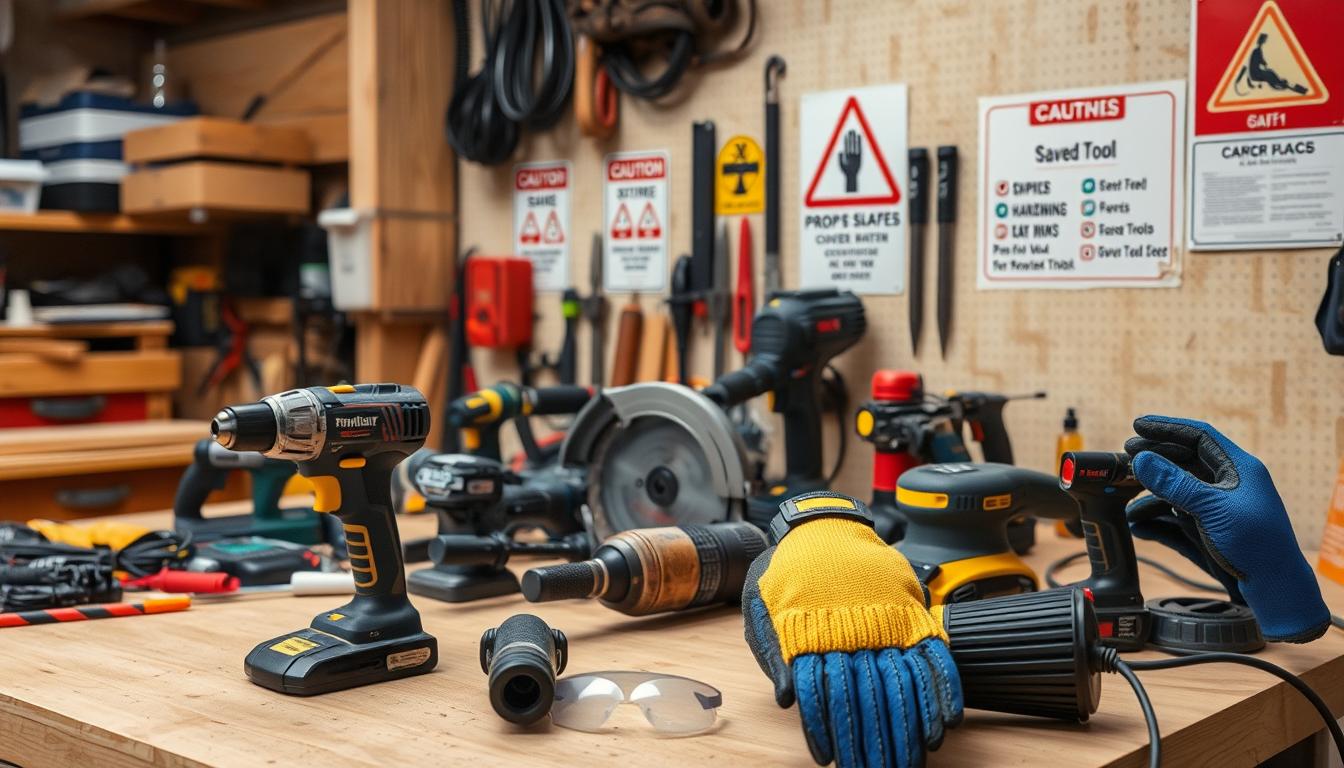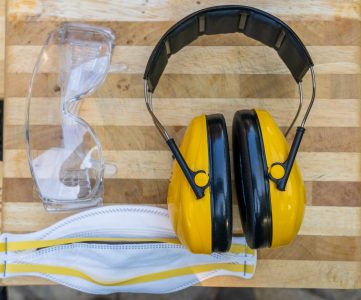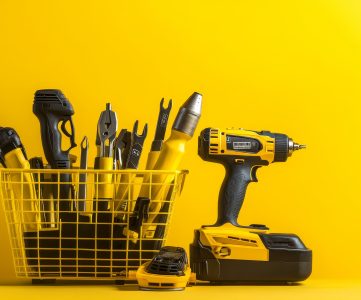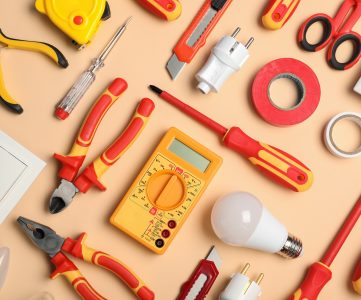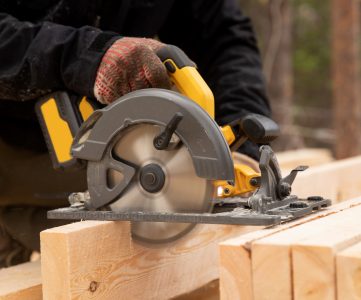Working with power tools requires a focus on safety to avoid accidents. Many mistakes can cause serious injuries. Following simple safety rules can greatly reduce accident risks and make the work area safer.
Knowing the dangers of power tools is key to a safe work environment. Being aware of hazards helps take the right steps to prevent accidents. This includes following safety tips and best practices for using power tools.
By focusing on safety and accident prevention, we can make our work environment safer. This protects us and those around us. It’s important to keep up with the latest safety guidelines and practices for a safe and successful work experience.
Introduction to Power Tool Safety
Power tool safety is vital in any work setting. Understanding common mistakes and how to avoid them is crucial. This section emphasizes the importance of safety tips and accident prevention in using power tools.
Key Takeaways
- Prioritize tool safety tips to prevent accidents
- Understand the risks associated with power tools
- Follow best practices for safe power tool operation
- Stay informed about the latest safety guidelines
- Create a safe and healthy work environment
- Adopt a safety-first approach to power tool operation
Understanding the Basics of Tool Safety
Tool safety is key in any workshop or work area. It’s vital to know the basics to avoid accidents and keep a safe space. Workshop safety goes beyond just following rules. It’s also about being aware of the dangers of power tools.
Having the right safety gear is crucial to lower risks and prevent accidents. This means wearing protective clothes, safety glasses, and gloves. Also, make sure all power tools are in good shape and well-maintained.
Why Tool Safety Matters
Tool safety is important because it can prevent serious injuries and even deaths. The Bureau of Labor Statistics reports thousands of workers get hurt each year from power tool accidents. By knowing the basics of tool safety and taking precautions, workers can make their work environment safer.
Common Types of Power Tool Accidents
Common power tool accidents include cuts, lacerations, and amputations. These can happen because of faulty tools, misuse, or lack of training. It’s crucial to spot potential dangers and take steps to avoid them.
The Cost of Safety Negligence
The cost of ignoring safety can be huge, both financially and in human suffering. By focusing on workshop safety and taking precautions, workers can lower accident risks. This means investing in proper safety gear and regular training and maintenance.
| Type of Accident | Frequency | Severity |
|---|---|---|
| Cuts and Lacerations | High | Medium |
| Amputations | Low | High |
| Electrical Shock | Medium | High |
Essential Safety Gear for Power Tool Operation
Using power tools safely means having the right safety gear. Personal protective equipment (PPE) is key to avoid injuries. You’ll need gloves, safety glasses, and ear protection. These items protect you from debris, loud sounds, and other dangers.
Wearing PPE is a must when using power tools. Safety glasses with UV protection can save your eyes from debris. Ear protection prevents hearing loss from loud noises.
Other safety gear might be needed for certain tools. This includes dust masks, steel-toed boots, and hard hats. Wearing the right gear lowers injury risks and ensures safe use. Here are some must-have safety items:
- Gloves: to protect your hands from cuts and abrasions
- Safety glasses: to protect your eyes from flying debris
- Ear protection: to prevent hearing loss from loud noises
- Dust masks: to prevent inhalation of dust and other particles
Investing in good PPE and following safety rules makes power tool use safe and effective. Always put safety first when working with power tools.
| Safety Gear | Description |
|---|---|
| Gloves | Protect hands from cuts and abrasions |
| Safety Glasses | Protect eyes from flying debris |
| Ear Protection | Prevent hearing loss from loud noises |
Pre-Operation Safety Checklist
To avoid power tool hazards and prevent accidents, a thorough safety check is key before using any tool. This checklist helps spot potential dangers and ensures safety measures are in place.
Before starting, inspect your power tool and its area. Look for damage or wear on the tool, cord, and plug. Make sure all guards and safety features are working right.
Visual Inspection Points
- Check the tool’s cord and plug for any signs of damage or wear
- Inspect the tool’s guards and safety devices to ensure they are in place and functioning properly
- Look for any loose or missing parts that could pose a hazard
Electrical Safety Checks
Electrical safety is crucial when using power tools. Make sure your tool is grounded and you’re using the right voltage and amperage for the task.
Workspace Preparation Guidelines
A clean, organized workspace is vital for safe tool use. Clear the area of clutter and ensure a stable work surface.
By following this safety checklist, you can greatly reduce the risk of accidents. Remember, safety is everyone’s duty. A detailed safety check can make a big difference.
| Safety Check | Yes | No |
|---|---|---|
| Visual inspection of tool and cord | ||
| Electrical safety checks | ||
| Workspace preparation |
Power Tool Hazards in the Workshop
Keeping your workshop safe is crucial. The right safety gear is key to avoiding dangers. Power tools can be risky if not used right. It’s important to know the risks they pose.
Sharp edges, moving parts, electrical dangers, and fire risks are common in workshops. To stay safe, you need the right safety gear. This includes gloves, safety glasses, and a dust mask.
These tools help protect you from injuries and accidents. Also, keeping your power tools in good shape is vital. This ensures they work right and don’t harm you.
Here are some important safety tips for your workshop:
- Check your power tools often for damage or wear.
- Wear the right safety gear for each tool.
- Always follow the tool’s use and maintenance instructions.
- Keep your workshop tidy to avoid tripping hazards.
By following these steps and using the right safety gear, you can make your workshop safer. Remember, safety is everyone’s job. Working together, we can make our workspace safer and more productive.
Don’t forget to check your safety gear often. Replace it when needed to keep it working well. This includes gloves, safety glasses, and dust masks. By focusing on safety and using the right gear, you can prevent accidents and keep your work environment safe and healthy.
Proper Tool Storage and Maintenance
Keeping tools in good shape is key for their long life and safe operation. Simple tool safety tips can help avoid accidents and injuries. Regular cleaning and checks can spot dangers and stop tools from breaking down.
Having a tidy storage area is also vital for tool safety. Use toolboxes, cabinets, and pegboards to keep tools tidy and out of kids’ and pets’ reach. Also, store tools in a dry, safe spot to avoid rust and damage.
It’s important to follow the maker’s guide for each tool’s upkeep. This includes oiling, sharpening, and swapping out old or broken parts. By sticking to these tool safety tips and keeping tools in check, you can ensure safe operation and dodge accidents.
- Regularly clean and inspect tools
- Use storage solutions to keep tools organized
- Follow manufacturer’s instructions for maintenance
- Replace worn or damaged parts promptly
By focusing on proper tool storage and upkeep, you keep your tools running smoothly. This cuts down on the chance of accidents and injuries. It’s a big part of keeping a safe and healthy workspace. Following these tool safety tips helps make this happen.
| Tool Type | Storage Solution | Maintenance Requirement |
|---|---|---|
| Hand Tools | Toolbox or Cabinet | Regular Cleaning and Lubrication |
| Power Tools | Pegboard or Storage Rack | Regular Inspection and Replacement of Worn Parts |
Creating a Safe Workshop Environment
Workshop safety is key for a productive and safe work space. It’s not just about having the right tools and safety gear. Proper ventilation, good lighting, and a tidy workspace are also crucial.
Some important steps for a safe workshop include:
- Ensuring proper ventilation to prevent inhalation of dust and fumes
- Providing adequate lighting to reduce eye strain and improve visibility
- Organizing the workspace to minimize tripping hazards and ensure easy access to safety equipment
By focusing on workshop safety and using the right PPE, you can make a safe and productive space. As workshop safety experts say, a well-organized and maintained workshop is vital for safety.
Following these guidelines helps create a safe and productive workshop. It meets your needs and ensures your well-being.
Electrical Safety Guidelines for Power Tools
Working with power tools means keeping electrical safety in mind. This is key to avoid accidents and keep everyone safe. Using extension cords correctly is a big part of this.
Extension cords are handy but can be dangerous if not used right. To stay safe, pick an extension cord that fits your tool’s needs. Don’t overload it with too many tools. Also, keep cords away from water and heat, and don’t damage them.
Extension Cord Safety
- Choose an extension cord that is rated for the tool’s power requirements
- Avoid overloading the cord with too many tools
- Keep extension cords away from water and heat sources
Grounding Requirements
Grounding is vital to avoid electrical shocks. Make sure all power tools are grounded properly. Use a grounding rod or mat and connect all tools to it.
Wet Conditions Precautions
Working with power tools in wet conditions is risky. To stay safe, use tools made for wet use. Avoid tools not rated for wet conditions.
| Condition | Precaution |
|---|---|
| Wet conditions | Use tools rated for wet conditions, avoid overloading |
| Dry conditions | Use tools rated for dry conditions, follow manufacturer’s instructions |
Training Requirements and Best Practices
Proper training is key for safe power tool use. Knowing tool safety tips and how to use safety gear prevents accidents. Regular training keeps users updated on safety and tool handling.
Some important training points include:
- Learning how to operate and maintain power tools
- Understanding the hazards and risks of each tool
- Knowing how to use safety gear like gloves and safety glasses
A good training program mixes theory and practice. It includes classroom lessons, hands-on training, and on-the-job experience. Proper training lowers accident risks and keeps the work area safe.
Training is not just a one-time thing. It’s an ongoing process. As new tools and tech come out, staying updated with tool safety tips and best practices is crucial. By focusing on training and education, people can work safely and efficiently.
By following these guidelines and committing to ongoing training, people can reduce accident risks. Safety is everyone’s job, and proper training is the way to a safe and successful work life.
| Training Component | Description |
|---|---|
| Theoretical Instruction | Covers the basics of power tool use, safety, and maintenance |
| Practical Training | Hands-on training with power tools, focusing on safe handling and operation techniques |
| On-the-Job Experience | Supervised work experience, applying learned skills and safety protocols in a real-world setting |
Emergency Response and First Aid Protocols
Even with the best safety plans, accidents can still happen. It’s important to have a plan for emergency response and first aid. This means having basic first aid supplies and knowing how to treat common injuries like cuts and bruises. Being ready for emergencies is as important as preventing accidents for safe work.
Having emergency contact info is a key part of emergency response. This includes phone numbers for local emergency services and nearby medical facilities. Having this info ready helps ensure quick action and medical help when needed.
First aid involves several important steps. These include:
- Stopping bleeding and cleaning wounds
- Applying ice to reduce swelling
- Providing comfort and support to the injured individual
By following these steps and having a plan for emergencies, we can prevent accidents and ensure safe work.
Accident prevention and safe operation are closely linked. Being prepared and knowing how to handle emergencies helps reduce injury severity and keeps the work environment safe.
| Emergency Response Steps | Importance |
|---|---|
| Having a plan in place | High |
| Providing basic first aid | High |
| Seeking medical attention when needed | Critical |
Tool-Specific Safety Techniques
Working with power tools requires knowing the power tool hazards for each one. Understanding these risks helps prevent accidents. It keeps your workshop safety environment safe.
Learn the safety rules for each tool. For example, when using a circular saw, keep loose clothes and long hair back. Also, avoid jewelry that could get caught. Always use a push stick to control the material.
Drill presses and routers need extra care. Make sure the workpiece is clamped well and the drill bit is right. Use a router table or stabilizer to keep the router steady.
- Always read the manufacturer’s instructions for each tool
- Wear proper personal protective equipment, such as safety glasses and earplugs
- Keep the work area clean and clear of clutter
- Avoid overreaching or stretching while operating a tool
By following these tips, you can make your workshop safety environment safe and productive.
| Tool | Safety Guidelines |
|---|---|
| Circular Saw | Keep loose clothing and long hair tied back, avoid wearing jewelry |
| Drill Press | Ensure workpiece is securely clamped, drill bit is properly aligned |
| Router | Use a router table or other stabilizing device, maintain control of the tool |
Safety Documentation and Record Keeping
Keeping a safe workshop is key. It’s important to track tool maintenance, safety checks, and training. This is where tool safety tips help, keeping your workshop safe.
Using PPE equipment is also vital. You should keep records of its use and upkeep. These records should include when it was last checked, when used, and by whom. Here are some important safety record points:
- Tool maintenance schedules
- Safety inspection reports
- Training records for employees
- PPE equipment use and maintenance logs
Keeping these records ensures your workshop follows the latest tool safety tips. It also makes sure your PPE equipment works well. This helps avoid accidents and meets safety rules.
Remember, safety records are more than following rules. They help make a safe and healthy work place for everyone.
| Record Type | Frequency | Retention Period |
|---|---|---|
| Tool Maintenance | Monthly | 2 years |
| Safety Inspections | Quarterly | 5 years |
| Training Records | Annually | 3 years |
Conclusion: Building a Safety-First Mindset
In this guide, we’ve covered why tool safety is key in the workshop. We’ve looked at the dangers of power tools and how to stay safe. The main thing is to always think safety first.
By following tool safety tips, using workshop safety best practices, and preventing accident prevention, you can reduce risks. This makes your workshop safer and more enjoyable.
Making safety a part of your daily routine is essential. It’s not just a suggestion; it’s a must. Keeping yourself and your tools safe is crucial. It also makes you more efficient and confident in your work.
Always be careful and keep up with the latest safety information. Let safety guide you as you start your next project.
